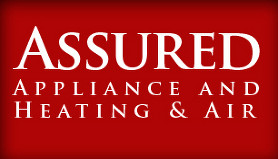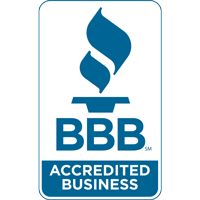
A furnace is often a background player in your home, helping keep you warm during the cold winter months. It often isn't noticed until something breaks down.
One root cause could be that your furnace has a cracked heat exchanger. It can be a safety risk, so it’s important to familiarize yourself with the evidence of a cracked heat exchanger and what you can do if you suspect that might be the problem.
What Is a Heat Exchanger in a Furnace?
A heat exchanger helps transition heat from the combustion chamber inside your furnace to the air that moves through the system. It generally handles this with coils or tubes that heat up the air while acting as a barrier to keep gas created in the combustion chamber, called flue gasses, from escaping out into your home.
Is a Cracked Heat Exchanger Dangerous?
Given its important role, it’s no surprise that a cracked heat exchanger can pose a risk. Cracks in the heat exchanger can allow dangerous gasses – such as carbon monoxide, which can be lethal – to circulate across your home.
For this reason, don't ever turn on your heating if you suspect you're dealing with a cracked heat exchanger, as letting it run could make the entire household sick. Call an HVAC professional immediately if you think your furnace has a cracked heat exchanger that needs to be repaired.
Four Warning Signs of a Cracked Heat Exchanger:
- Furnace turns off: Cracks in the heat exchanger could cause your furnace to switch off.
- Strange Smells: If the air coming out of your furnace has a powerful chemical odor, it could be evidence gas is seeping through cracks in your heat exchanger. These gasses, which may smell like formaldehyde, are a significant warning sign.
- Carbon monoxide alarm is triggered or you notice health problems: If a cracked heat exchanger is releasing carbon monoxide into your home, your carbon monoxide alarm should go off or family members may experience signs of carbon monoxide poisoning. Complications include headaches, dizziness, weakness, nausea, vomiting or feeling tired. If an alarm goes off or you feel sick, get out of the home immediately and then call for help.
- Soot: If you notice black sooty accumulating around the exterior of your furnace, it’s another sign something could be seriously wrong.
What to Do if Your Furnace Heat Exchanger is Cracked
If you worry your furnace has a cracked heat exchanger, call a professional experienced in furnace installation Genoa right away so they can inspect your system and, if needed, handle a furnace heat exchanger replacement. Costs will fluctuate depending on the situation, but estimates run in the neighborhood of $1,000 to $3,000.
Estimates aside, the good news is that heat exchangers are regularly included in the warranty. You’ll want to check the warranty paperwork on your furnace, as while the warranty might not cover the entire cost of repairs, it can significantly reduce your bill.
How to Prevent a Cracked Heat Exchanger in Your Home
One of the easiest ways to prevent a problem in your furnace overall is via routine furnace maintenance. Furnaces offer the most benefits when they run efficiently. Hiring a trained professional to check your furnace for worn-out parts, dirty filters and other likely problems can help you avoid getting a big bill later on.
It’s also beneficial to inspect your furnace filters every few months – it’s ideal some filters be replaced every 90 days or sooner if they are dirty or grimy. While the filters are not part of the heat exchanger itself, the strain of dragging air through a clogged filter makes the entire furnace work longer to accomplish its job. And the harder your furnace needs to run, the more wear and tear pieces like the heat exchanger will endure.

